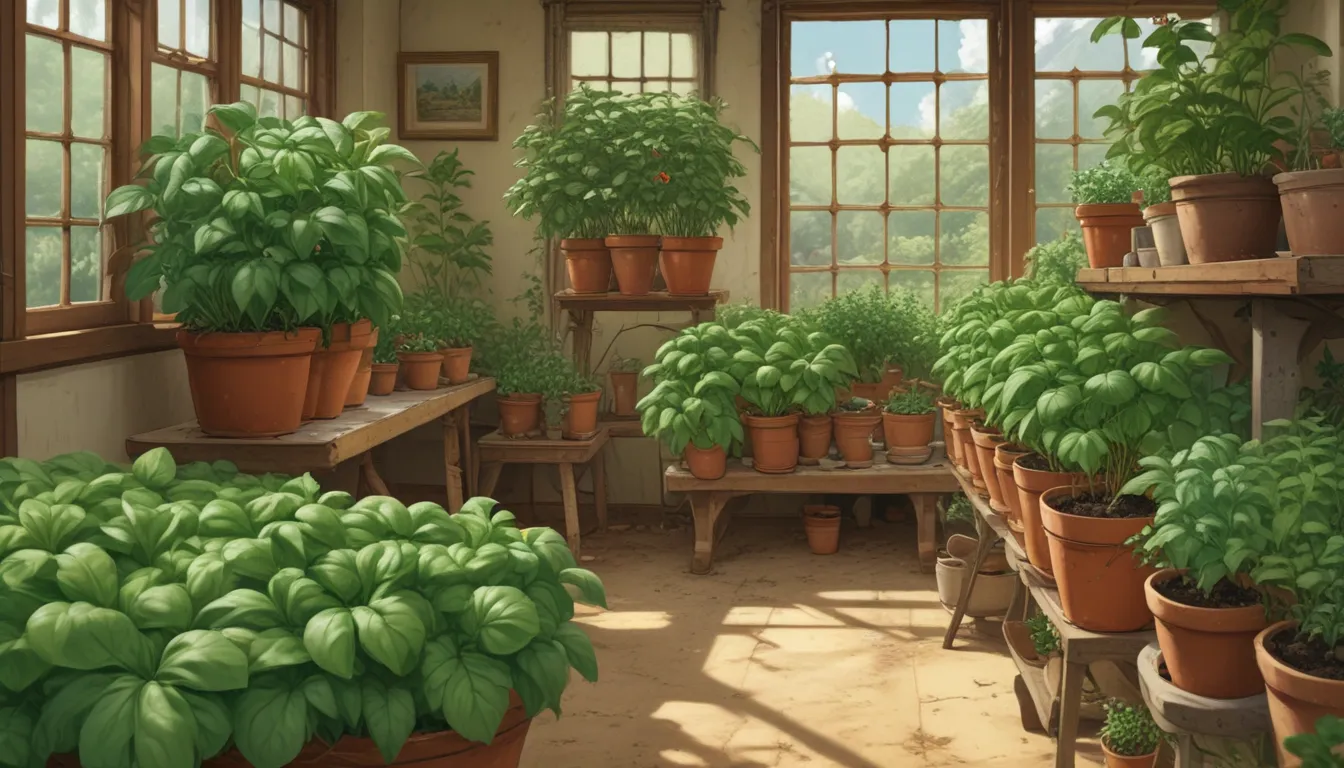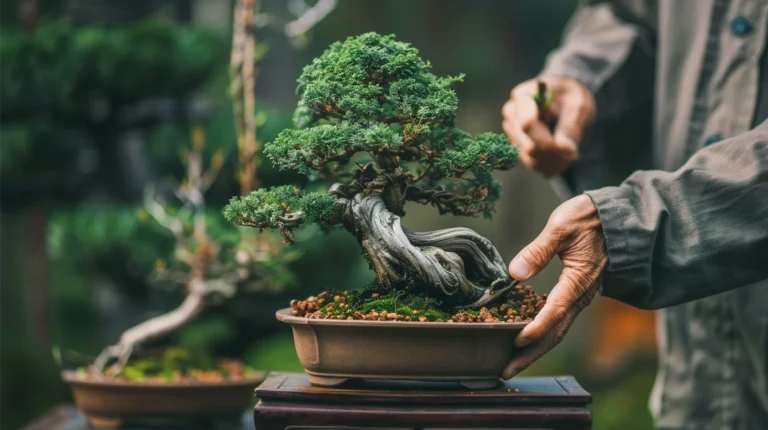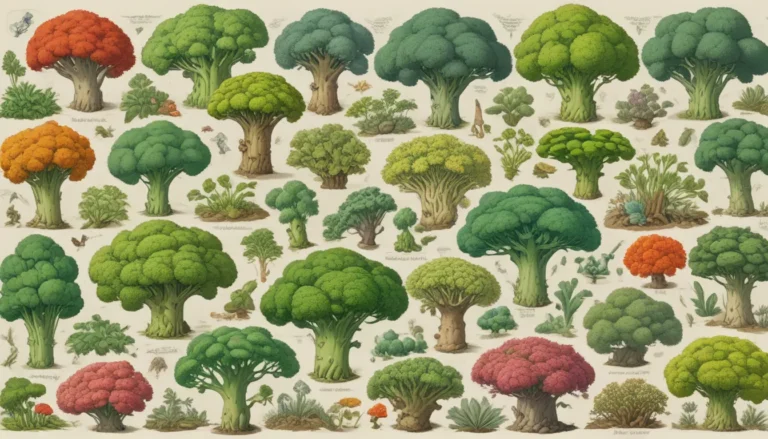How to Plant and Grow Basil: A Complete Guide

Introduction to Basil
Basil – the aromatic herb with sparkling green or purple leaves and a sweet anise flavor. It’s highly versatile, widely used in culinary applications, and one of the easiest herbs to grow. Whether for sweet or savory dishes, basil’s unique taste has been enjoyed across cultures for centuries, making it a must-have for kitchen gardens.
Known for its quick growth and distinctive flavor, basil plants are a favorite among gardeners for their flavorful and vibrant leaves. Additionally, when mature, basil plants produce beautiful spires of flowers that attract pollinators like bees and butterflies. The edible flowers can also be used as a charming garnish for plates or beverages.
Loaded with antioxidants, basil is not only flavorful but also beneficial for your health. Traditional cultures have long used basil in medicine, and modern research continues to uncover its positive health effects. Whether you’re a novice gardener or an experienced enthusiast, growing basil in your garden is a rewarding experience.
In this comprehensive guide, we’ll cover everything you need to know to successfully plant and grow basil. From cultivation history to propagation, growing tips, popular species and cultivars, managing pests and diseases, harvesting, preserving, and cooking ideas – get ready to transform your garden with this outstanding herb!
What Is Basil?
Basil plants are tender perennials in the Ocimum genus prized for their flavorful deep green or purple leaves used in various culinary dishes. From tomato sauces to refreshing beverages, basil leaves add a tangy flavor with undertones of cinnamon, licorice, or mint – depending on the variety.
A member of the mint family, Lamiaceae, basil is closely related to popular herbs like lavender, mint, rosemary, and thyme. With essential oils like methyl chavicol, linalool, and methyl cinnamate, the fragrant leaves have a sweet, slightly spicy taste that enhances the flavor of both sweet and savory dishes.
With approximately 65 accepted species and numerous cultivars, O. basilicum is the most common basil variety. Popular types include ‘Genovese,’ ‘Greek,’ ‘Red Rubin,’ and ‘Thai’ cultivars. Basil is a warm weather herb grown as an annual, providing multiple harvests throughout the growing season.
Basil originates from tropical regions of Africa, India, and Southeast Asia and has been cultivated for centuries. Traveling through the spice trade routes, it reached Europe by 300 BC and the North American colonies by the 1620s. Today, basil is widely cultivated globally and utilized in various industries, from cosmetics to food and beverages.
Propagation Techniques
Starting Seeds Indoors
- Fill a flat with moistened, sterilized seed starter soil.
- Scatter seeds, cover lightly with soil, and water gently.
- Maintain soil temperature between 50-70°F for optimal germination.
- Provide bright light for seedlings and keep soil slightly moist.
- Thin seedlings once they reach 4 inches tall and have 2 sets of true leaves.
- Plant outdoors once all danger of frost has passed.
Direct Sowing Outdoors
- Wait for soil temperatures to reach 60-70°F.
- Plant seeds in well-draining soil in a sunny location.
- Keep soil moist until seeds germinate.
- Thin seedlings to appropriate spacing once they have true leaves.
Propagating from Stem Cuttings
- Cut 3-6 inch stems from mature plants.
- Remove leaves from the bottom of stems.
- Place stems in water on a sunny windowsill.
- Change water every other day.
- Plant cuttings once roots are 1-2 inches long.
Cultivation and History
Native to tropical regions of Africa, India, and Southeast Asia, basil has a rich history of cultivation. Ancient cultures from Egypt to Greece used basil for medicinal, perfumery, and culinary purposes. Traversing through Europe and North America, basil has become a staple in modern gardens and kitchens. With a fascinating history dating back to the spice trade routes, basil is revered for its diverse applications and vibrant flavors.
How to Grow Basil
Growing basil is a rewarding experience that requires a few key considerations to thrive. Basil plants prefer full sun, humus-rich, well-draining soil with a slightly acidic to neutral pH. Plant basil once the soil and air temperatures are suitable for its growth, and ensure consistent watering to maintain soil moisture. Regular feeding with an all-purpose fertilizer helps promote healthy growth and abundant foliage production.
For container plants, choose pots with adequate drainage to prevent waterlogging. Prepare the soil with compost and grit for optimal growth. Prune basil plants regularly to encourage branching and delay flowering for prolonged leaf production. Consider companion planting with tomatoes and other nightshade members for enhanced flavor and growth benefits.
Growing Tips
- Ensure full sun exposure for optimal growth.
- Use humus-rich, well-draining soil.
- Regularly feed basil plants with balanced fertilizer.
- Pinch out tops to encourage branching and leaf production.
Basil Species and Cultivars to Select
With a wide range of species and cultivars available, choosing the right basil variety is essential for your garden. Whether you prefer traditional ‘Genovese’ basil for pesto or ‘Red Rubin’ for its striking foliage, there’s a basil variety to suit every palate. Consider growing ‘Greek’ basil for intense flavor or ‘Thai’ basil for a unique twist in Asian-style dishes.
Popular Basil Varieties
- Genovese: Ideal for sauces and pesto with a sweet, spicy flavor.
- Greek: Dwarf variety with robust, spicy flavor.
- Italian Large Leaf: Heirloom variety suitable for breads and sauces.
- Limoncello: Tangy citrus-flavored basil for various dishes.
- Red Rubin: Striking bronzed foliage with cinnamon and clove undertones.
- Thai: Sweet-scented basil with purple flowers for Asian recipes.
Managing Pests and Disease
Despite its resilience, basil plants can face challenges from various pests and diseases. From aphids to downy mildew, being vigilant and proactive is key to maintaining healthy basil plants. Implementing natural pest control methods like introducing beneficial insects or using insecticidal soaps can help manage common pests like aphids and whiteflies. Preventive measures such as proper watering techniques and adequate air circulation can reduce the risk of diseases like damping off and leaf spot.
Common Pests:
- Aphids: Small sapsuckers that cause leaf damage.
- Japanese Beetles: Metallic beetles that create holes in leaves.
- Slugs and Snails: Mollusks that feed on basil leaves.
- Whiteflies: Flying insects that cause yellowing of leaves.
Common Diseases:
- Damping Off: Soilborne fungi leading to seedling collapse.
- Downy Mildew: Fungal-like organism causing leaf discoloration.
- Fusarium Wilt: Soilborne fungus resulting in wilting and stunted growth.
- Leaf Spot: Bacterial disease causing water-soaked blotches on leaves.
Harvesting and Preserving
Harvesting basil at the right time ensures maximum flavor and aroma retention. Morning harvests when essential oils are at their peak are ideal for picking basil leaves. Regular pinching and pruning of basil plants encourage new growth and delay flowering, resulting in continuous harvests throughout the growing season.
To preserve basil, drying or freezing are effective methods to enjoy the herb beyond its growing season. Air drying or using a food dehydrator are suitable for drying basil leaves, while freezing basil in olive oil or as ice cubes helps retain flavor. Proper storage in airtight containers ensures the longevity of dried or frozen basil leaves.
Recipes and Cooking Ideas
Basil’s aromatic and flavorful leaves lend themselves well to a variety of recipes. From traditional Italian pesto to sweet basil shortbread cookies, the culinary possibilities with basil are endless. Incorporate fresh basil leaves into sauces, soups, stews, salads, and even sweet treats for a burst of freshness and flavor. Experiment with different basil varieties to enhance the taste of your favorite dishes and create new culinary delights in the kitchen.
Conclusion
Basil is more than just an herb – it’s a culinary delight, a versatile ingredient, and a rewarding plant to grow. With its rich history, diverse varieties, and robust flavors, basil holds a special place in gardens and kitchens around the world. By following the tips and guidelines outlined in this comprehensive guide, you can cultivate thriving basil plants, harvest flavorful leaves, and enjoy the culinary wonders of this remarkable herb. Whether you’re a beginner gardener or an experienced enthusiast, growing basil in your garden is a delightful experience that adds flavor and freshness to your dishes.
What are your favorite basil varieties to grow? Share your thoughts and experiences in the comments below!
For more information and inspiration on growing herbs and spices, explore our other articles and resources:
- Tips for Growing Citrus Basil
- Sweet Dani’ Lemon Basil: A Guide to Cultivation
- 13 Favorite Basil Varieties for the Garden
Let your garden flourish with the vibrant flavors of basil and transform your culinary creations with this fragrant and versatile herb. Happy gardening and happy cooking!
This revitalized article provides an in-depth exploration of how to plant and grow basil, featuring valuable information, practical tips, and inspiring ideas for the reader. Whether you’re a seasoned gardener or a novice enthusiast, the engaging and educational content offers a comprehensive guide to cultivating basil in your garden. From propagation techniques to managing pests and diseases, from selecting popular basil varieties to preserving and cooking with basil – this article serves as a valuable resource for anyone looking to enhance their gardening and culinary skills.





